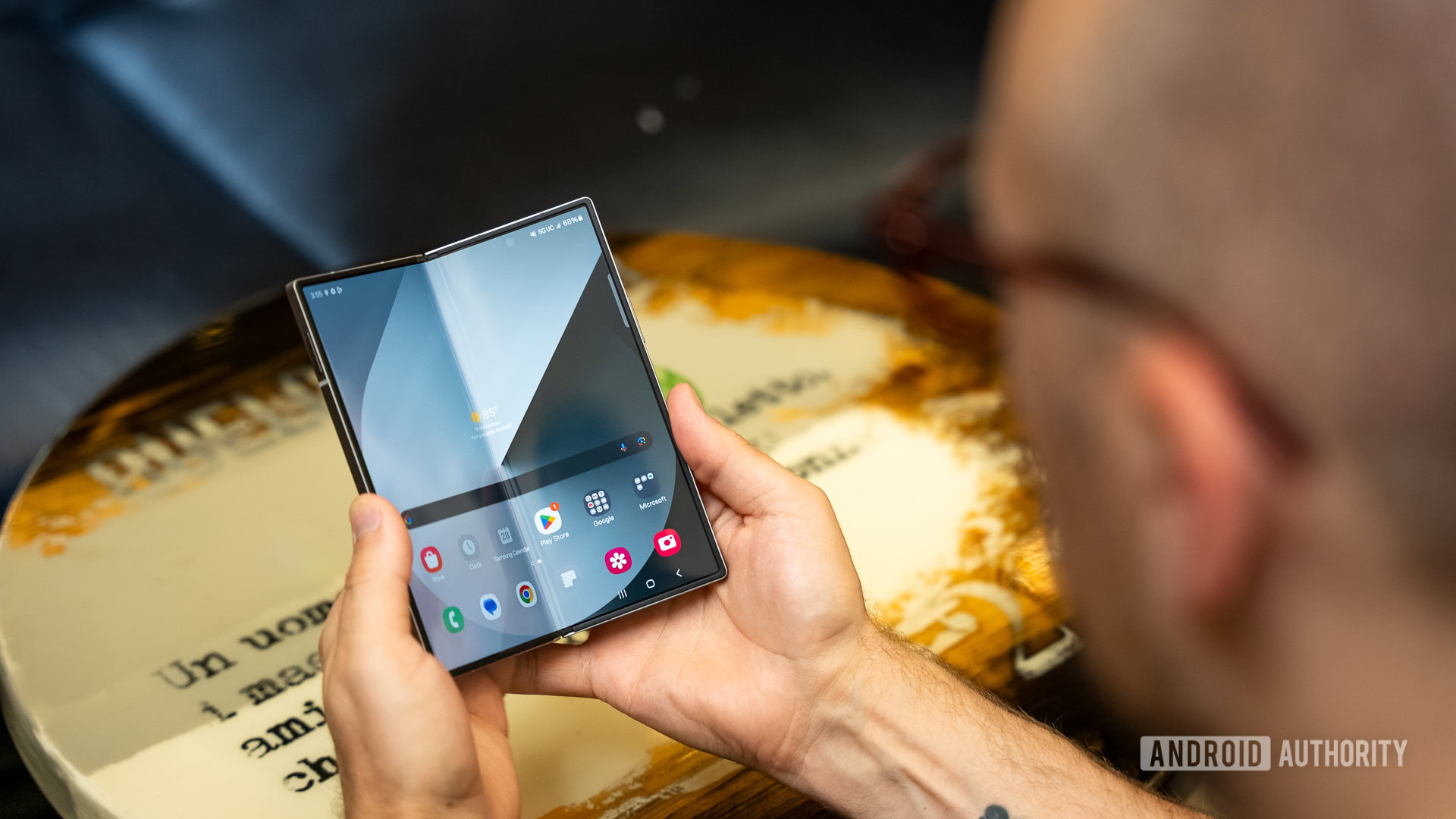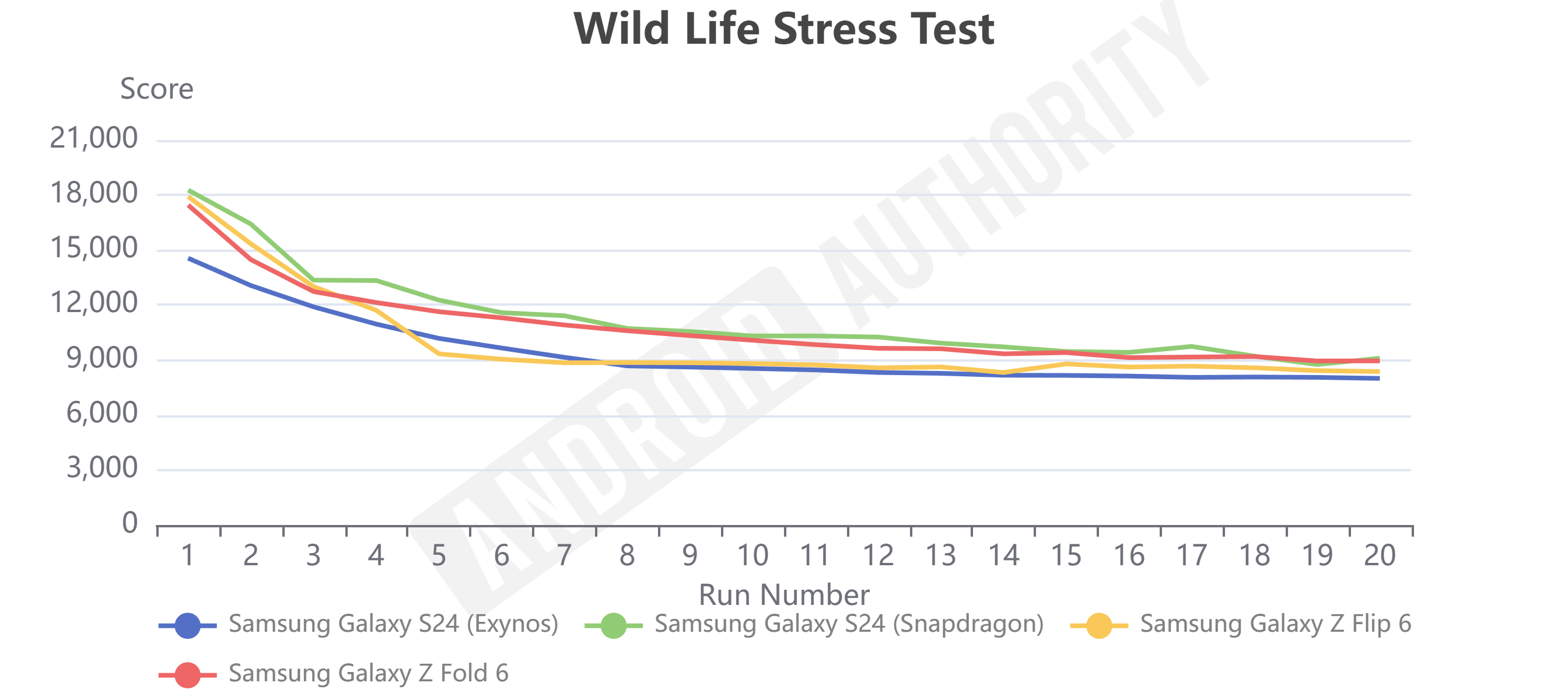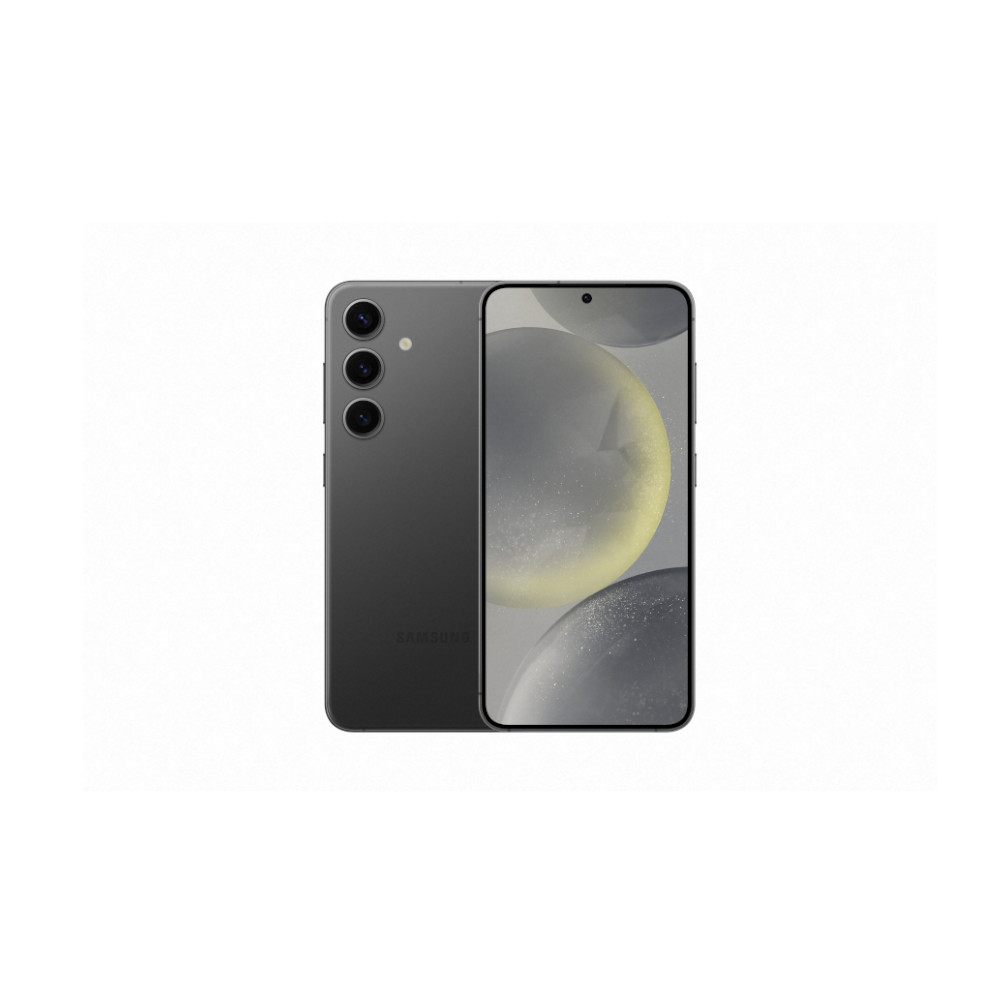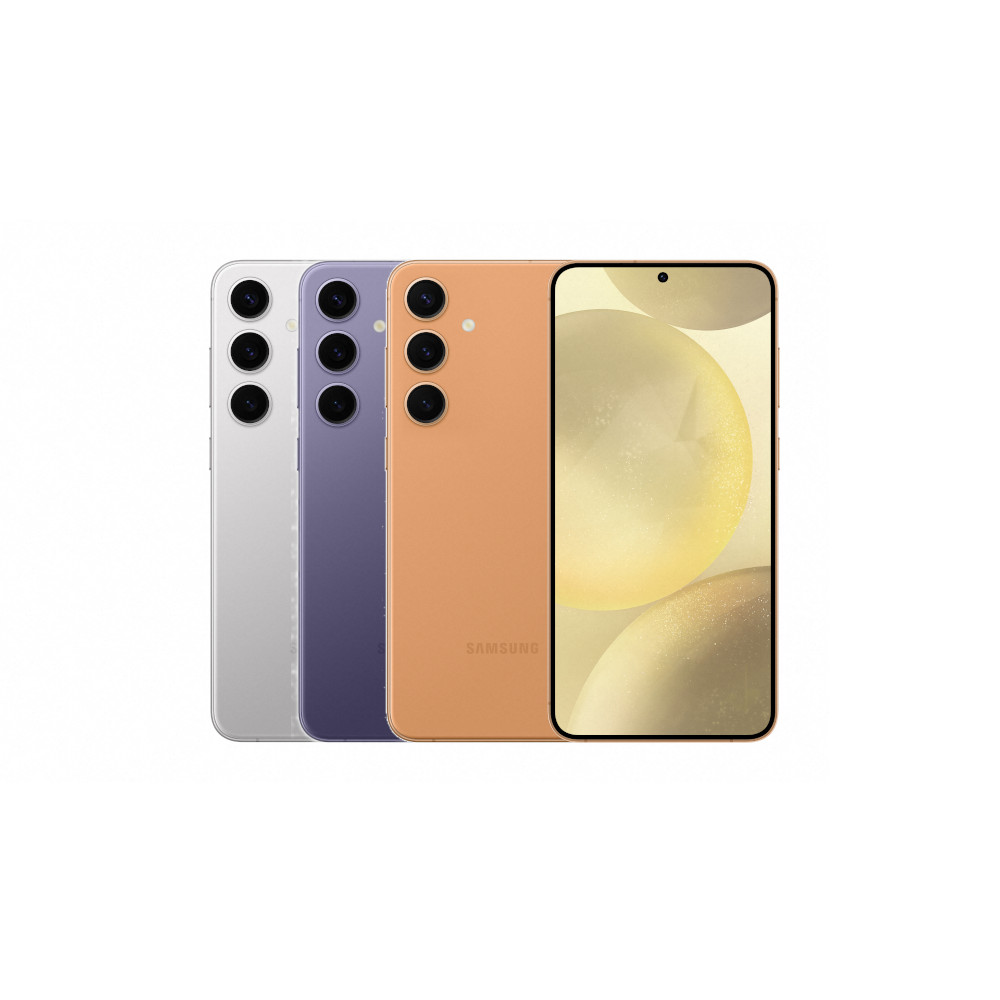Affiliate links on Android Authority may earn us a commission. Learn more.
Tested: The Exynos Galaxy S24 is better than we expected
The return of Samsung’s Exynos chipset in the Galaxy S24 series once again leaves us with a high-end flagship series sporting a key hardware difference depending on where you reside. To recap, all Galaxy S24 Ultra owners and S24 and S24 Plus customers in the US, Canada, China, Taiwan, and Hong Kong all receive the Snapdragon 8 Gen 3 for Galaxy chipset. Customers who buy the Galaxy S24 or S24 Plus in Europe, the UK, India, and other regions receive the Exynos 2400 for Galaxy.
We’ve already covered the low-level Snapdragon 8 Gen 3 and Exynos 2400 specifications, and both models support the same Galaxy AI features. Today, we’re diving into our test results to explore what performance differences, if any, exist between these versions of the same phone. To make the test completely fair, we’ve grabbed both Exynos and Snapdragon versions of the regular Galaxy S24, ensuring consistent battery capacity, display specs, and other hardware for our side-by-side comparison.
Snapdragon has the best performance
Look across our suite of benchmarks, and the Snapdragon 8 Gen 3 model comes out ahead of the Exynos Galaxy S24 in every test. The margins aren’t huge; there’s just 7% between the two in Geekbench 6 and 5% in PCMark. Due to the phones ‘ similar CPU and memory capabilities, you’re unlikely to notice any performance difference for daily and heavy-duty workloads. Perhaps the most interesting result is that the Exynos’ ten-core setup is bested by Snapdragon’s bulkier eight-core CPU design, which relies less on little power-efficient cores.
However, the suite of 3DMark graphics tests shows bigger wins for the Snapdragon 8 Gen 3, which outscores the Exynos 2400 by 25% in Wild Life and 18% in the more demanding Wild Life Extreme. The exception is Solar Bay, which uses ray tracing. The two models score virtually identically here, suggesting a ray tracing bottleneck in the Adreno architecture. Samsung’s use of AMD’s RDNA 3 Xclipse architecture pays off.
Turning to stress tests, it’s clear that the limited cooling capabilities of the compact Galaxy S24 form factor don’t allow either of these GPUs to run at full tilt for long. Both throttle back roughly simultaneously, but the Snapdragon model falls furthest from its peak potential. It falls to just 47.9%, 54.2%, and 43.6% of its peak performance in each respective test. Exynos falls to 54.9%, 56.5%, and 60.3% after 20 runs. That said, the 8 Gen 3 still outperforms the Exynos chip in standard rasterization. The exception is ray tracing, where the AMD architecture still pulls ahead as heat builds up.
Snapdragon is the stronger gaming chip, but Exynos wins at ray tracing under stress.
Interestingly, the Exynos chip has marginally higher temperatures across all three of these tests. It averages about 2°C warmer than the Snapdragon phone under stress. Thankfully, neither phone breaches the dreaded 50°C mark.
Exynos offers better battery life
While Snapdragon has the edge in performance, our testing suggests Exynos Galaxy S24 customers will see better battery life than their Snapdragon counterparts. This was also the case with previous-generation chipset comparisons, including the Snapdragon 865 vs Exynos 990 and Snapdragon 888 versus Exynos 2100.
It’s not a clear-cut win for Exynos in all our battery life tests. Camera capture time clocks in at about the same on both models, and the Snapdragon version lasted 16% longer at 4K30 video capture.
However, the Exynos Galaxy S24 pulls ahead with 17% longer 4K video playback and gaming benchmark times, and a 14% lead in our Zoom call test. The biggest win, however, is 36% longer battery life in our automated web browsing test. When it comes to the tasks you’re likely to do most often throughout the day, the Exynos Galaxy S24 seems to last a fair bit longer.
Exynos steams ahead with at least a 15% lead in most of our battery life tests.
Why is this the case? There are a few possibilities. First, the Exynos 2400 has two additional small CPU cores and lower clock speeds across all ten of its cores. Using the lower-clocked CPUs for lighter workloads, such as web browsing, should consume less power because the background work is distributed across lower-power cores. Similarly, it could be that Samsung Foundry’s third-generation 4nm (LPP+) manufacturing process is as or even slightly more efficient than the TSMC 4nm process used by the Snapdragon 8 Gen 3.
This could also factor into the longer video playback times we see with the Exynos model. It’s also possible that Samsung’s video decoder is more efficient, but we’re well into speculation here.
Of course, this test suite isn’t an exhaustive list of possible use cases, so your mileage will vary. Modem capabilities and the associated drain when roaming between towers will affect these results but are beyond the scope of what we can test. Likewise, background tasks and other options will drain the battery too, so this test is more of a rough guide than absolute battery life expectations. Still, the Exynos 2400 seems more frugal across most of our tests, pointing to longer battery life for global customers versus the Snapdragon model.
What about the foldables?

Samsung’s latest foldables — the Galaxy Z Flip 6 and Galaxy Z Fold 6 — ship exclusively with Snapdragon 8 Gen 3 silicon. However, their more confined internals have often resulted in additional heat and, therefore, lower performance.
Samsung went so far as to include a vapor chamber inside the Z Flip 6 for the first time to help offset the heat of a more powerful chip housed in a tiny chassis. See our Samsung Galaxy Z Flip 6 benchmarks for additional details on the vapor chamber differences. The good news is that one-run benchmarks score virtually the same, regardless of which Snapdragon-powered Galaxy S or Z handset you’re packing. We have absolutely no concerns about day-to-day performance here.

When it comes to stress testing, however, Samsung’s foldables fall somewhere between the Snapdragon 8 Gen 3 and Exynos 2400 performance levels we observed with the regular Galaxy S24. That’s still plenty of performance, even for gamers. Still, those who demand absolutely peak performance may prefer the Galaxy S Plus or Ultra over a foldable.
Snapdragon vs Exynos Galaxy S24, which is better?
Looking at this year’s Galaxy S24 and S24 Plus models, the regional trade-off is marginally higher gaming performance for Snapdragon 8 Gen 3 customers, especially when it comes to non-ray-traced titles. However, Exynos users may end up with battery life for many common workloads. Everyone will have their preference and priority here (I’d take the extra battery life).
Ultimately, there’s not a lot to be done about this anyway. Whether your region ships Exynos or Snapdragon versions of the Galaxy S24 and S24 Plus is a lottery, and we’d hardly recommend the hassle of importing a different model. After all, the core Samsung Galaxy S24 experience, including those covered Galaxy AI features, is the same, regardless of which processor your phone comes with.

Neat AI features
Robust battery life

Excellent update commitment
Handy Galaxy AI features

Excellent update commitment
Brilliant flat display